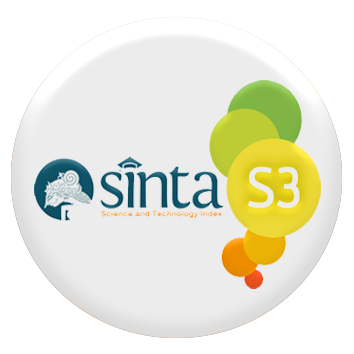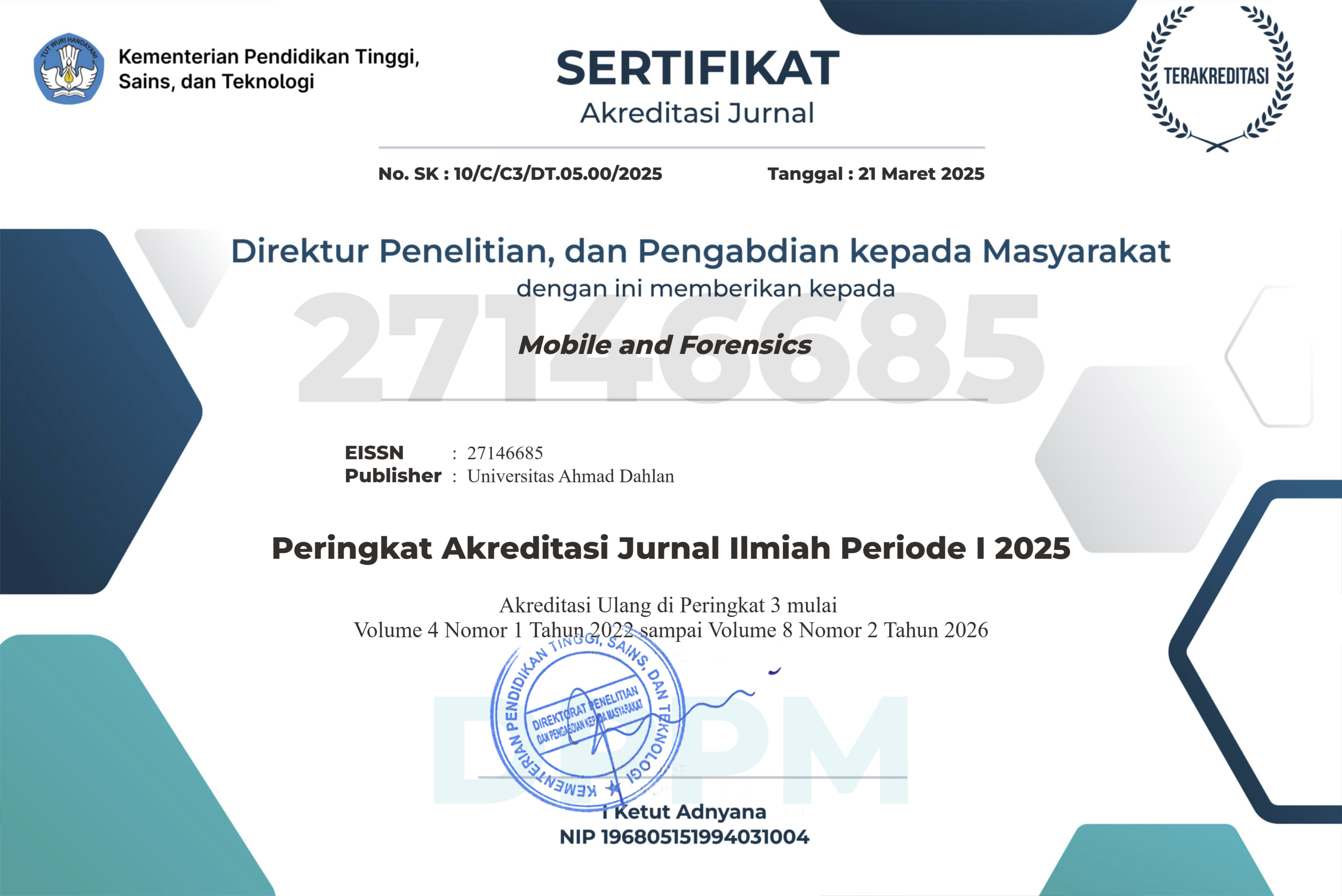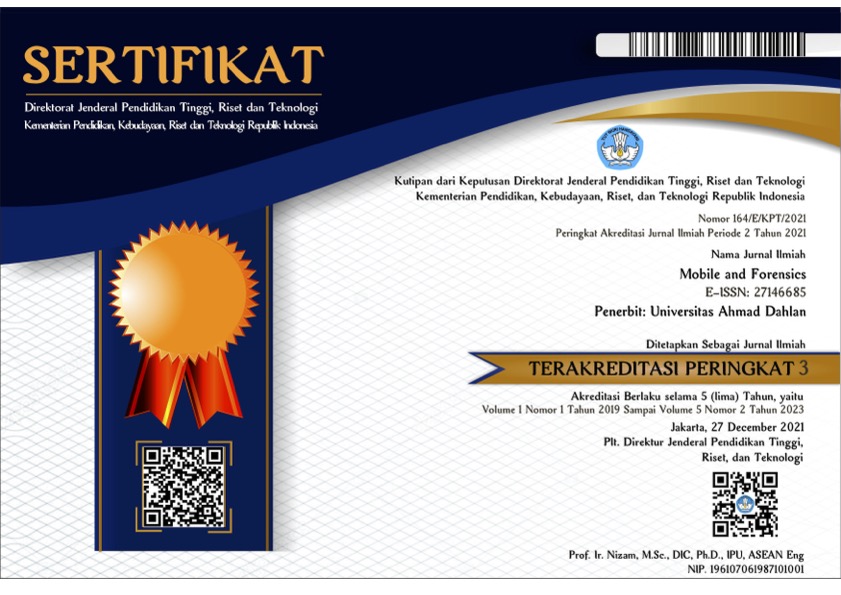A Security Development Life Cycle (SDLC)-Based Approach for Designing Intrusion Detection and Prevention Systems to Counter SQL Injection Attacks at MAN 2 Magetan
DOI:
https://doi.org/10.12928/mf.v7i1.9365Keywords:
Intrusion Detection System , Intrusion Prevention System, SQL Injection, Security Development Life Cycle, Web Application SecurityAbstract
Information security is a critical aspect of ensuring the validity, integrity, and availability of data while protecting users’ access to services. Inadequate security measures can expose systems to various threats, potentially compromising their functionality. One such threat is SQL Injection, a common attack vector targeting web applications. MAN 2 Magetan, an Islamic high school located in Purwosari, Magetan Regency, East Java, Indonesia, operates an online admission system on its website. However, this website contains input fields that are not properly validated, creating a vulnerability to SQL Injection attacks. This study aims to design and implement an Intrusion Detection and Prevention System (IDPS) to mitigate SQL Injection attacks using the Security Development Life Cycle (SDLC) methodology. The SDLC process for the system development consists of five stages: Analysis, Design, Implementation, Enforcement, and Enhancement. A hybrid system combining Intrusion Detection System (IDS) and Intrusion Prevention System (IPS) was utilized to create an effective solution. The results of the research demonstrate that the developed IDPS successfully detects and prevents SQL Injection attacks, ensuring the security and integrity of the online admission system. The integration of IDS and IPS within the SDLC framework has proven to be an effective approach to enhancing web application security at MAN 2 Magetan.

Downloads
Published
Issue
Section
License
Copyright (c) 2025 Muhammad Naufal Hafizh, Nuril Anwar, Ahmad Azhari

This work is licensed under a Creative Commons Attribution-ShareAlike 4.0 International License.
Start from 2019 issues, authors who publish with JURNAL MOBILE AND FORENSICS agree to the following terms:
- Authors retain copyright and grant the journal right of first publication with the work simultaneously licensed under a Creative Commons Attribution License (CC BY-SA 4.0) that allows others to share the work with an acknowledgment of the work's authorship and initial publication in this journal.
- Authors are able to enter into separate, additional contractual arrangements for the non-exclusive distribution of the journal's published version of the work (e.g., post it to an institutional repository or publish it in a book), with an acknowledgment of its initial publication in this journal.
- Authors are permitted and encouraged to post their work online (e.g., in institutional repositories or on their website) prior to and during the submission process, as it can lead to productive exchanges, as well as earlier and greater citation of published work.

This work is licensed under a Creative Commons Attribution-ShareAlike 4.0 International License.












 Mobile and Forensics (MF)
Mobile and Forensics (MF)